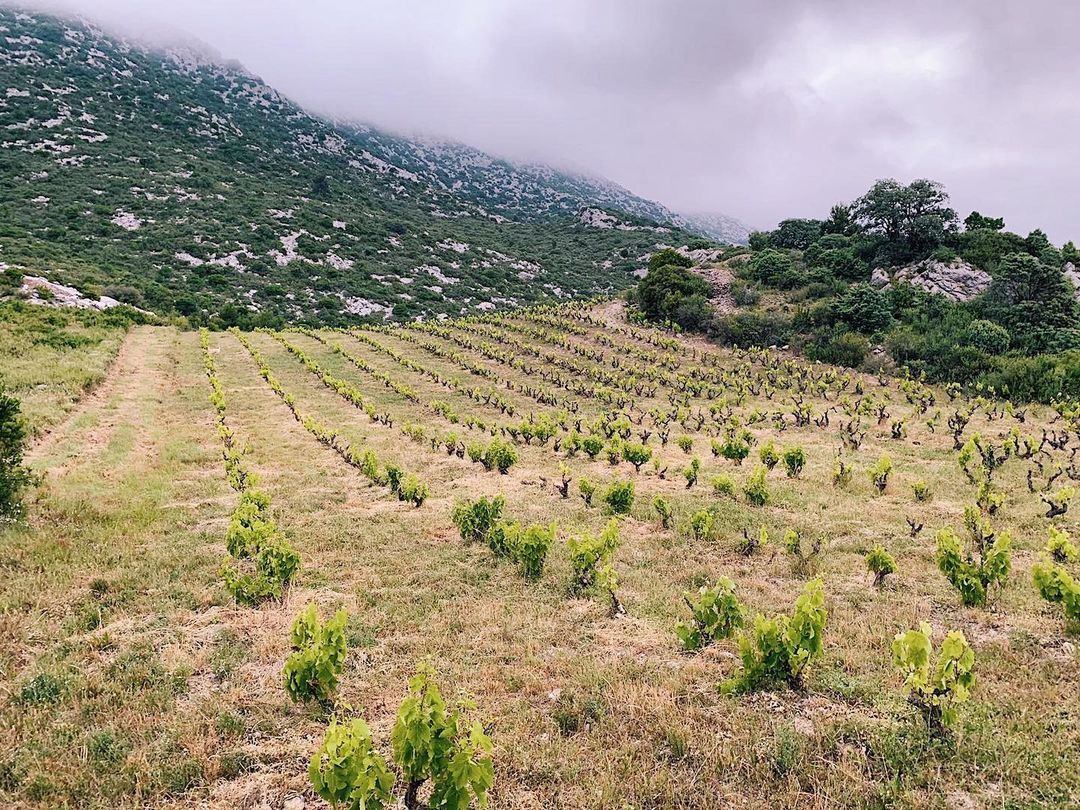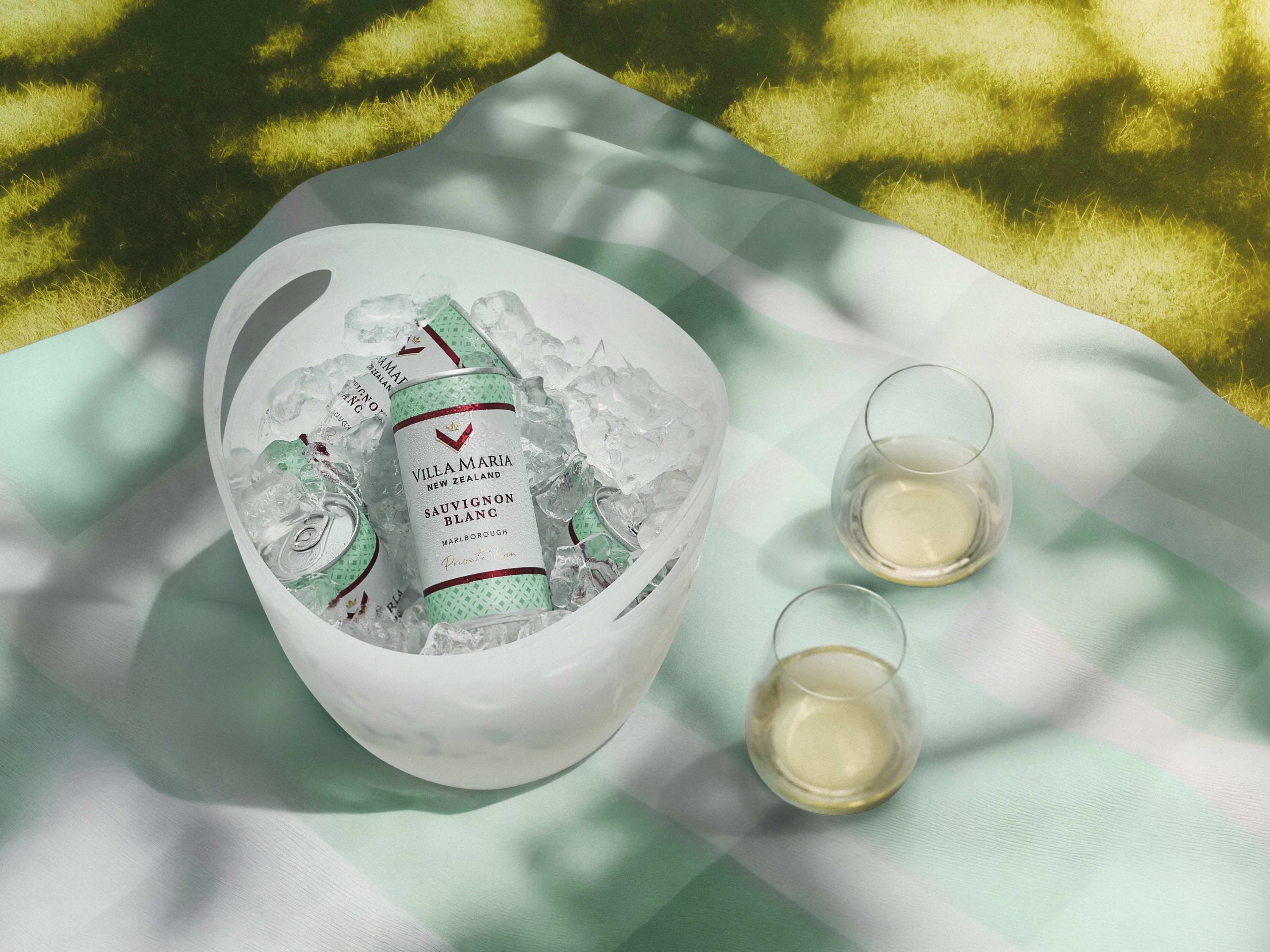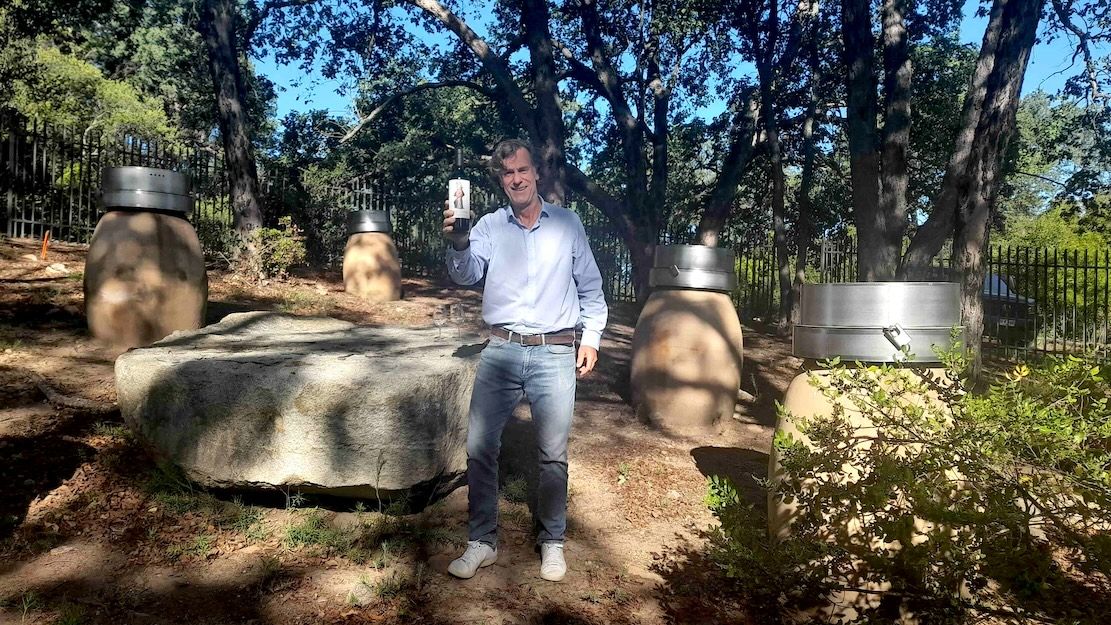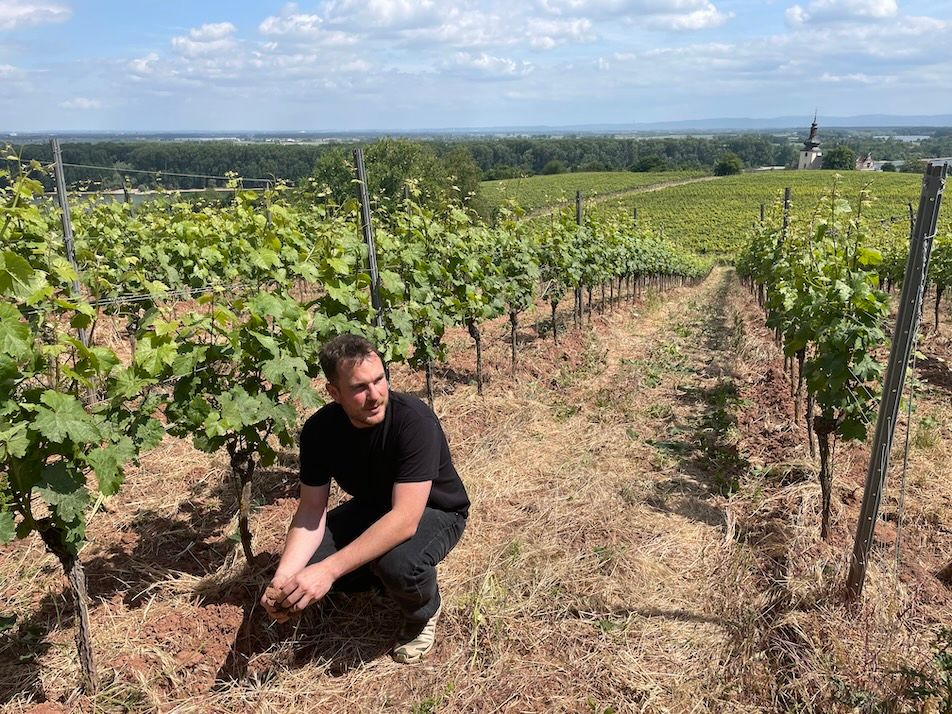“The region clearly needs more exposure, and hopefully after this tasting, it will start to get it. Because there’s some treasure here,” writes Keay
“Roussillon really deserves a more prominent place in the wine world,” says Rosemary George MW, author of the just published The Wines of Roussillon (Infinite Ideas).
It’s hard to argue. Roussillon’s appeal has been obscured by nomenclature (until 2016 it was part of Languedoc-Roussillon even though its history, language and indeed wines are quite distinct), over-identification with a single type of wine (Vin Doux Naturel, a historic but now unfashionable and declining wine style) and poor market distribution (few wines are exported to the UK).

The trade and press tasting of Wines of Roussillon, London, June 2021
Hopefully some of this will change after last week’s Wines of Roussillon Trade and Press tasting in London’s Great George Street. Alongside an informative masterclass by George, wines from 12 producers were shown, almost none with a UK importer, but all demonstrating that she is correct – the region merits a higher profile.
In her book, George writes that “it is only really in the last 20 years that the table wines of Roussillon have acquired a distinctive identity of quality,” with winemakers keen to compensate for the declining fortunes of Vin Doux Naturel by upping their investment in and focus on red wine in particular (which accounts for most of the still wine production). You could also argue that the entire region is rediscovering itself – historically, linguistically and vinously; Roussillon only joined France in 1659 and is best understood as northern Catalonia, and its official uncoupling from the Languedoc only happened five years ago.
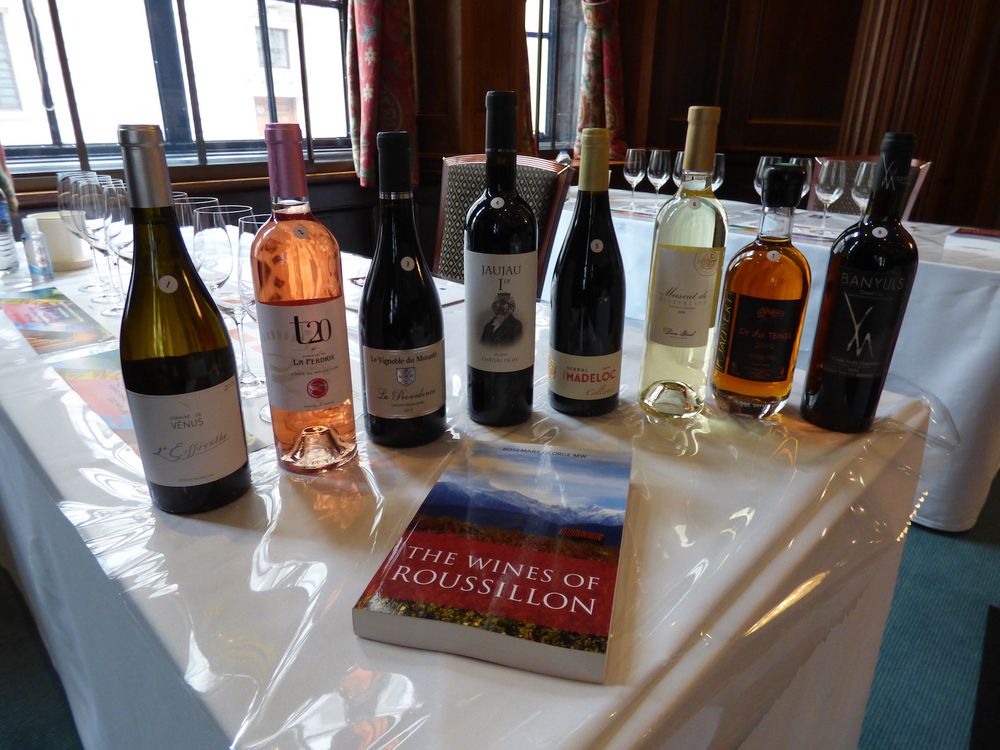
There were 12 very different producers to discover at the tasting, with a broad range of wines that made me wonder what else this region can muster? They reflect a complicated terroir (just about every soil type except volcanic is present), a complex wine map (comprising 14 AOPs and 2 IGPs) and 24 different varieties, with Grenache (red, grey and white) dominant and Macabeu increasing as white plantings increase. Although cooperatives dominate, producing 75% of output (which has declined as quality has increased), small family producers are on the up, wanting to grab a share of Roussillon’s ongoing viticultural renaissance.
So where were the standouts?
I loved most of what I tasted from Dom Brial, established 98 years ago in a village founded by the eponymous French monk and three time winner of the best French cooperative award. Highlights included their Château les Pins Rouge 2014, comprising Syrah, Grenache Noir and Mourvedre – very intense, leather and liquorice charged – the Château les Pins Primage 2015, a sweet red Grenache from the Rivesaltes AOP that literally smelled and tasted of cherries, the Muscat de Rivesaltes 2020, a blend of Muscat des Petit Grains and Muscat d’Alexandre. All very good value too.
Next up, Domaine de Vénus a young producer based in an area best known for sweet wine – Maury – is clearly still finding its way with whites and pinks but showed two delicious, hefty and well made reds, Passions 2015 and Les Demons de Vénus 2015. Both made from 60% Syrah, 30% Grenache Noir and 10% Carignan, the latter is made only in the best years and here showed wonderful black pepper, liquorice and red berries. Still young.
Château de Jau is another historic producer with Benedictine links; one of the larger producers with 100 hectares under vine. It showed a great range of well-priced wines and a spicy, moreish Rivesaltes Amber from 2007 that really demonstrated the appeal of this style (oak-aged four years, complex, not too sweet and just 15% alcohol). The star though was the Jaujau 1er Red 2018, barrel aged for a year, spicy pepper on the nose and palate, firm tannins and a long, lingering finish.
Domaine de la Perdrix is a 200 year old family estate turned organic, with some 32 hectares of vineyard. Its Tradition Rosé 2020, shown by George in her masterclass, is one of the best pink wines I’ve tasted this year. 60% Syrah, 49% Grenache Noir, it has a lovely fresh nose with lots of red berry fruit supported by decent minerality. And great value with a RRP under £8.
Le Vignoble du Monastir, a new producer focused on red table wines, showed a range of wines of which my favourite was La Providence 2018, a full bodied, quite edgy and brambly wine made from 110 year old Carignan vines. Highly distinctive.
Domaine Madeloc in Banyuls-Sur-Mer – home to some heroic viticulture because of its narrow, steep, sea-facing terraces – was bought by Famille Pierre Gaillard 20 years ago, making red, white and fortified wines. The white Penya 2020, a blend of 70% Grenache Gris and 30% Vermentino is wonderful rich and complex, showing great citrus and floral flavours and good acidity. Pretty full on, but well balanced.
Domaine F. Jaubert, with 50 hectares around the heart of Rousillon, seems to do it all, with 10 varieties and white, red, pink and fortified wines. Stand outs included the delicious, balanced, spicy, fruit-charged 100%C 2019, made from Carignan, but the real star was the Or du Temps, a 17% amber fortified made from 70% Grenache Gris and 30% Grenache Blanc. This is full on, mouth coating wine but surprisingly not that sweet, indicative of the range of Vin Doux Naturel wines that the Roussillon is capable of producing and, which George argues, need to be savoured… and saved. Couldn’t agree more.

Family owned for five generations, based in the heart of Banyuls, Domaine Vial-Magnères’ Banyuls Grand Cru Andre Magnères 2009, made from 100% Grenache Noir, is incredibly rich, and incredibly delicious. Tawny style, fig and walnut on the palate. The other wines made by this Grenache-focused producer were pretty fine, notably the very floral, pear and apricot-scented Banyuls Rivage 2018 (Grenache Blanc) and the oxidative style Banyuls Gaby Vial 7 Ans, a very rich sweet blend of Grenache Noir and Gris. A great, exciting producer.
Jonquères d’Oriola Vignobles – which traces its family winemaking lineage back 27 generations to 1485 – offers a wide range of wines including a moreish Gris-Gris 2020, made from Grenache Noir and Gris with an intriguing label, recalling an old fashioned newspaper headline. The draw for me though was the Château de Corneilla La Cavalcade 2020, a lovely well balanced white made from Grenache Blanc, Macabeu and Vermentino; floral, spicy with suggestions of brioche, it benefits from substantial lees ageing.
Mas Baux is a small organic producer based close to the sea, its vines benefiting from the Mediterranean breezes. The star here was Autant en Emporte Le Blanc 2019, which translates as ‘Gone With the White’, as very well you might with a wine of this quality; very long, this beautifully structured blend of Grenache Gris and Blanc showed brioche, butter apple and pears on a rounded palate. Quite delicious.
Domaine Vaquer has been run by the Vaquer family for five generations and has a 16 hectare vineyard at 200m overlooking the sea, now in organic conversion. Oenologist Frederique Vaquer prioritises freshness in her wines which is particularly apparent in the Esquisse 2020, an aromatic blend of 40% Roussanne, 40% Macabeu and 20% Grenache Blanc, with plenty of stone fruit on the palate. Also noteworthy is her amber sweet wine Preface 1994, a fortified blend of Macabeu, Grenache Blanc and Grenache Gris. This Vin Doux Naturel is surprisingly dry for a sweet wine, with warm orange and walnut flavours on the palate.Les Terrasses de l’Arago is another family winery, operated for two generations by the Mangin family and offering a wide range of red, pink, white and sweet wines. The highly mineral Eleccio Blanc (White Choice) 2020 is a well balanced, quite mineral and floral blend of Grenache Blanc and Roussanne; meanwhile the sweet fortified Soir d’Ivresse 2011 Rivesaltes is a full and rich expression of Macabeu and Grenache Gris.
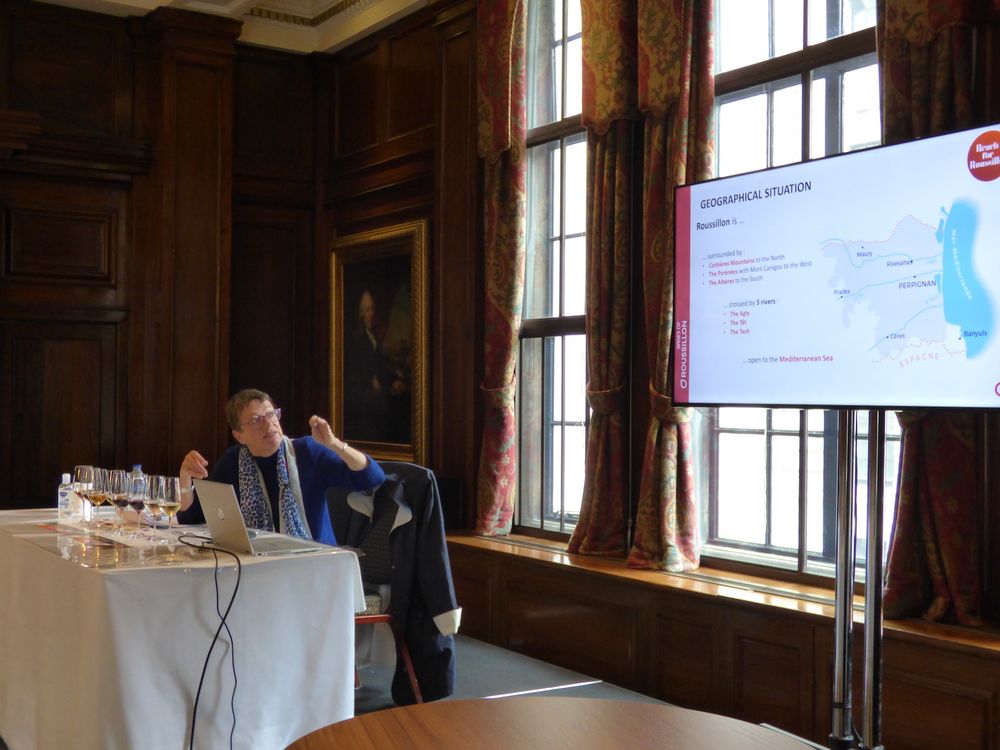
Rosemary George masterclassAnd in conclusion…
At the end of her masterclass, George wondered why wines from Roussillon – which is essentially northern Catalonia, with Perpignan the second Catalan city after Barcelona – have such a lower profile than those from Priorat, for example. Grape varieties are pretty much the same after all, and quality, as we’d all tasted, is not an issue. I’d argue that it comes down to the region being obscured in people’s minds by much bigger Languedoc, with Pays d’Oc adding its own confusion to the mix. The region clearly needs more exposure, and hopefully after this tasting, it will start to get it. Because there’s some treasure here.
